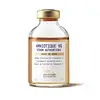What's inside
What's inside
 Key Ingredients
Key Ingredients

 Benefits
Benefits

 Concerns
Concerns

No concerns
 Ingredients Side-by-side
Ingredients Side-by-side

Water
Skin ConditioningPropanediol
SolventMethylpropanediol
SolventButylene Glycol
HumectantCeratonia Siliqua Seed Extract
Skin ConditioningCamellia Sinensis Leaf Extract
AntimicrobialCryptomeria Japonica Bud Extract
Skin ConditioningBacillus/Soybean Ferment Extract
Skin ConditioningHexapeptide-11
Skin ConditioningOligopeptide-1
Skin ConditioningOligopeptide-2
Skin ConditioningOligopeptide-3
Skin ConditioningAcetyl Glutamine
Skin ConditioningFolic Acid
Skin ConditioningSodium Hyaluronate
HumectantCitric Acid
BufferingLecithin
Emollient1,2-Hexanediol
Skin ConditioningTriethanolamine
BufferingCaprylyl Glycol
EmollientSodium Benzoate
MaskingWater, Propanediol, Methylpropanediol, Butylene Glycol, Ceratonia Siliqua Seed Extract, Camellia Sinensis Leaf Extract, Cryptomeria Japonica Bud Extract, Bacillus/Soybean Ferment Extract, Hexapeptide-11, Oligopeptide-1, Oligopeptide-2, Oligopeptide-3, Acetyl Glutamine, Folic Acid, Sodium Hyaluronate, Citric Acid, Lecithin, 1,2-Hexanediol, Triethanolamine, Caprylyl Glycol, Sodium Benzoate
Water
Skin ConditioningGlycerin
HumectantAlgae Extract
EmollientPentylene Glycol
Skin ConditioningOpuntia Ficus-Indica Stem Extract
Skin ConditioningPapaver Rhoeas Petal Extract
EmollientPhaseolus Radiatus Extract
Skin ConditioningJuglans Regia Shell Extract
Skin ConditioningPanthenol
Skin ConditioningLactic Acid
BufferingSodium Lactate
BufferingAllantoin
Skin ConditioningSerine
MaskingSorbitol
HumectantPropylene Glycol
HumectantTea-Lactate
HumectantTriethanolamine
BufferingUrea
BufferingPhenylpropanol
MaskingSodium Benzoate
MaskingWater, Glycerin, Algae Extract, Pentylene Glycol, Opuntia Ficus-Indica Stem Extract, Papaver Rhoeas Petal Extract, Phaseolus Radiatus Extract, Juglans Regia Shell Extract, Panthenol, Lactic Acid, Sodium Lactate, Allantoin, Serine, Sorbitol, Propylene Glycol, Tea-Lactate, Triethanolamine, Urea, Phenylpropanol, Sodium Benzoate
Ingredients Explained
These ingredients are found in both products.
Ingredients higher up in an ingredient list are typically present in a larger amount.
Sodium Benzoate is a preservative. It's used in both cosmetic and food products to inhibit the growth of mold and bacteria. It is typically produced synthetically.
Both the US FDA and EU Health Committee have approved the use of sodium benzoate. In the US, levels of 0.1% (of the total product) are allowed.
Sodium benzoate works as a preservative by inhibiting the growth of bacteria inside of cells. It prevents the cell from fermenting a type of sugar using an enzyme called phosphofructokinase.
It is the salt of benzoic acid. Foods containing sodium benzoate include soda, salad dressings, condiments, fruit juices, wines, and snack foods.
Studies for using ascorbic acid and sodium benzoate in cosmetics are lacking, especially in skincare routines with multiple steps.
We always recommend speaking with a professional, such as a dermatologist, if you have any concerns.
Learn more about Sodium BenzoateTriethanolamine is an emulsifier and pH adjuster. It is created using ethylene oxide and ammonia. This gives Triethanolamine a nitrogen core and a similar scent to ammonia.
As an emulsifier, it prevents ingredients from separating and enhances texture by adding volume to a product.
PH adjusters are common in cosmetic products. The pH of a product can affect the effectiveness of other ingredients. A product with a high pH may also irritate the skin.
Learn more about TriethanolamineWater. It's the most common cosmetic ingredient of all. You'll usually see it at the top of ingredient lists, meaning that it makes up the largest part of the product.
So why is it so popular? Water most often acts as a solvent - this means that it helps dissolve other ingredients into the formulation.
You'll also recognize water as that liquid we all need to stay alive. If you see this, drink a glass of water. Stay hydrated!
Learn more about Water